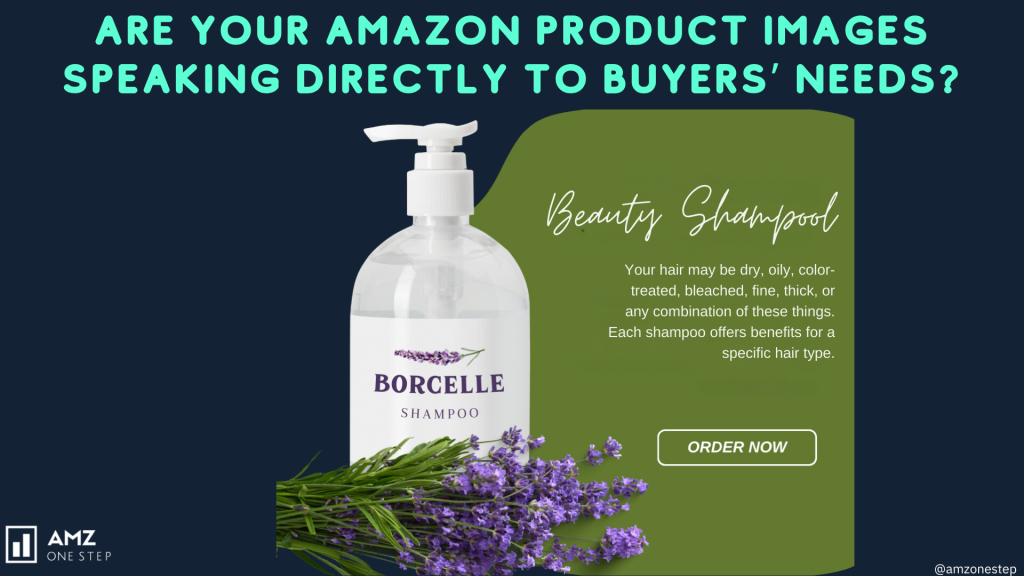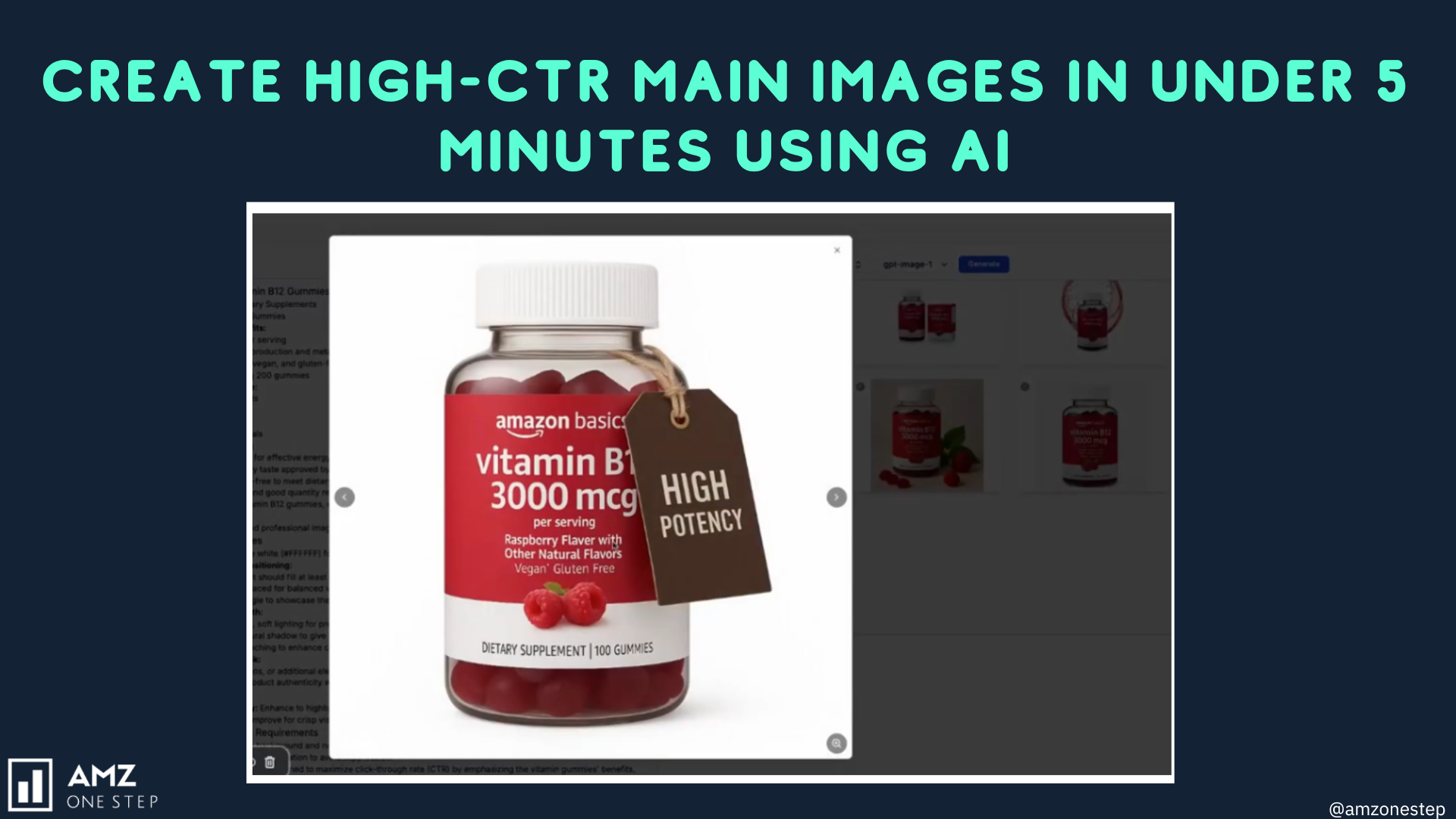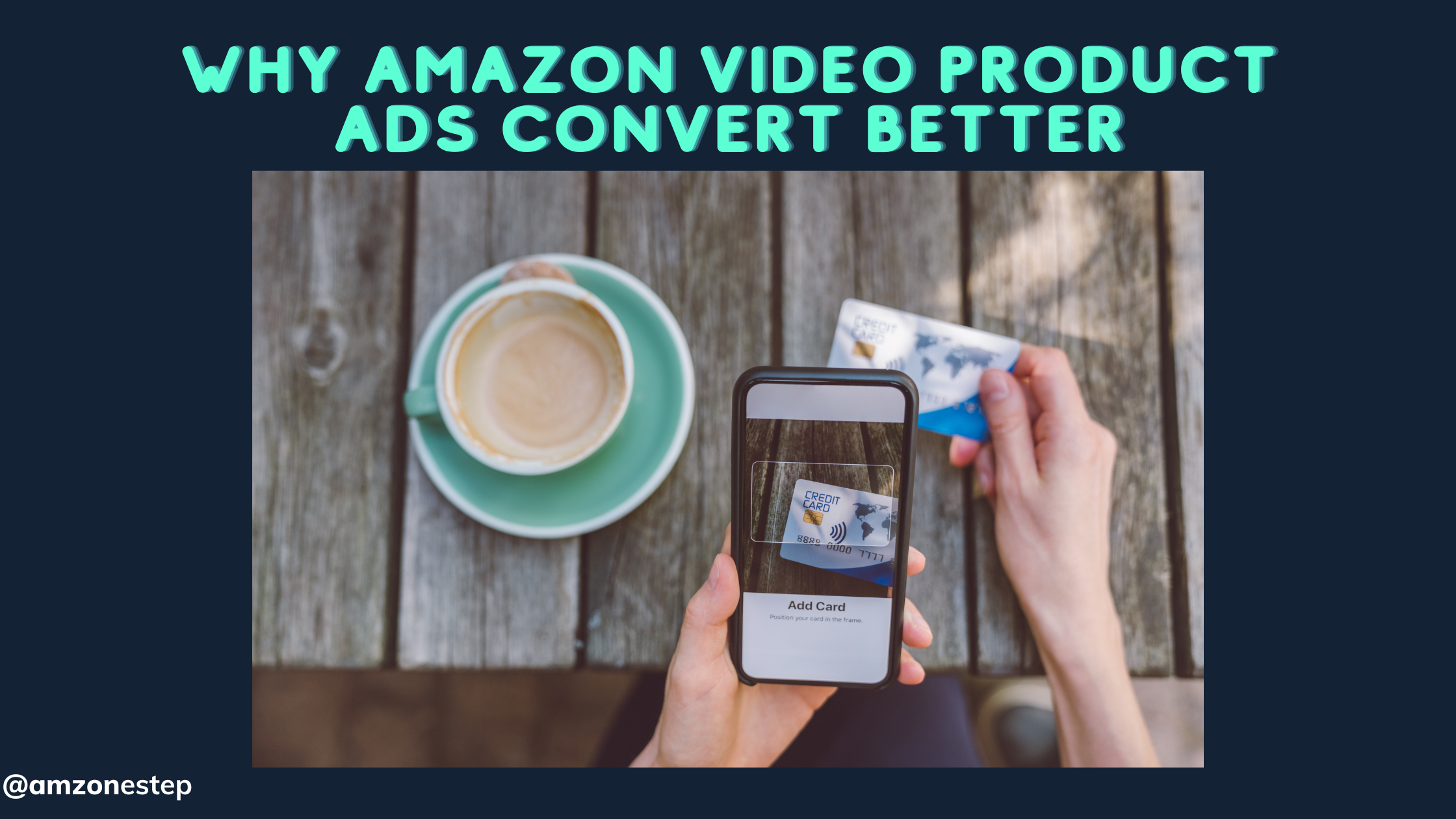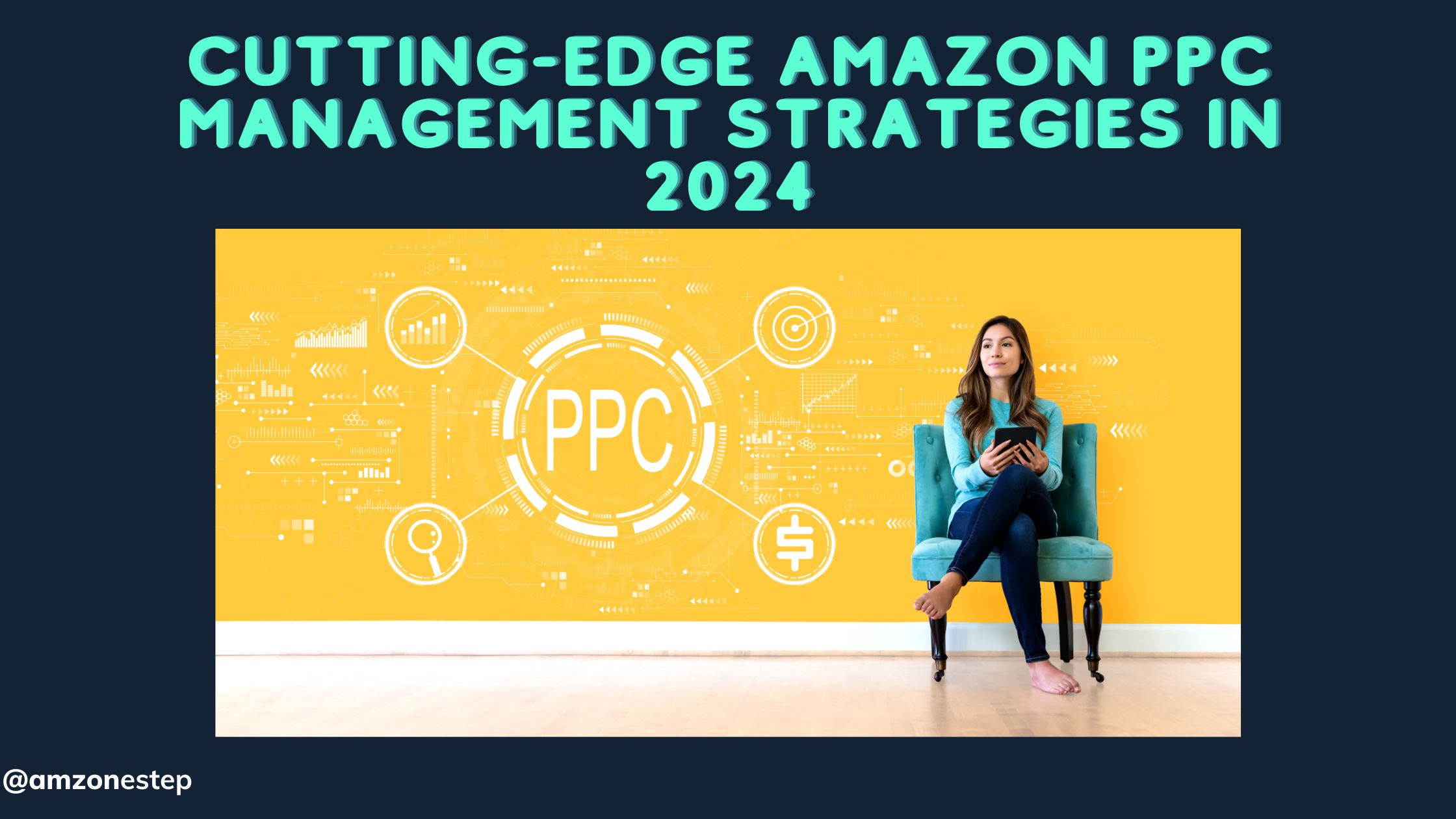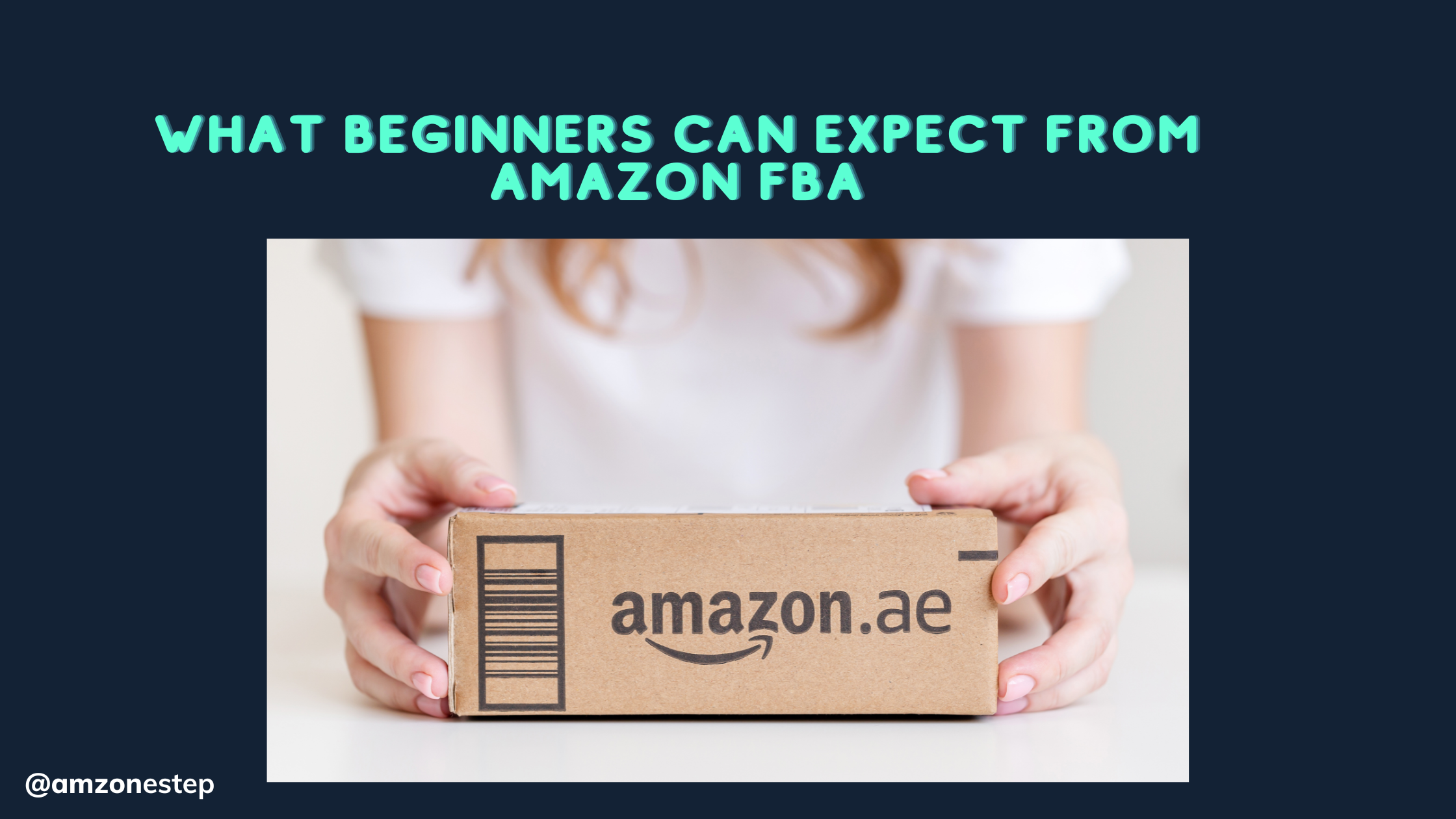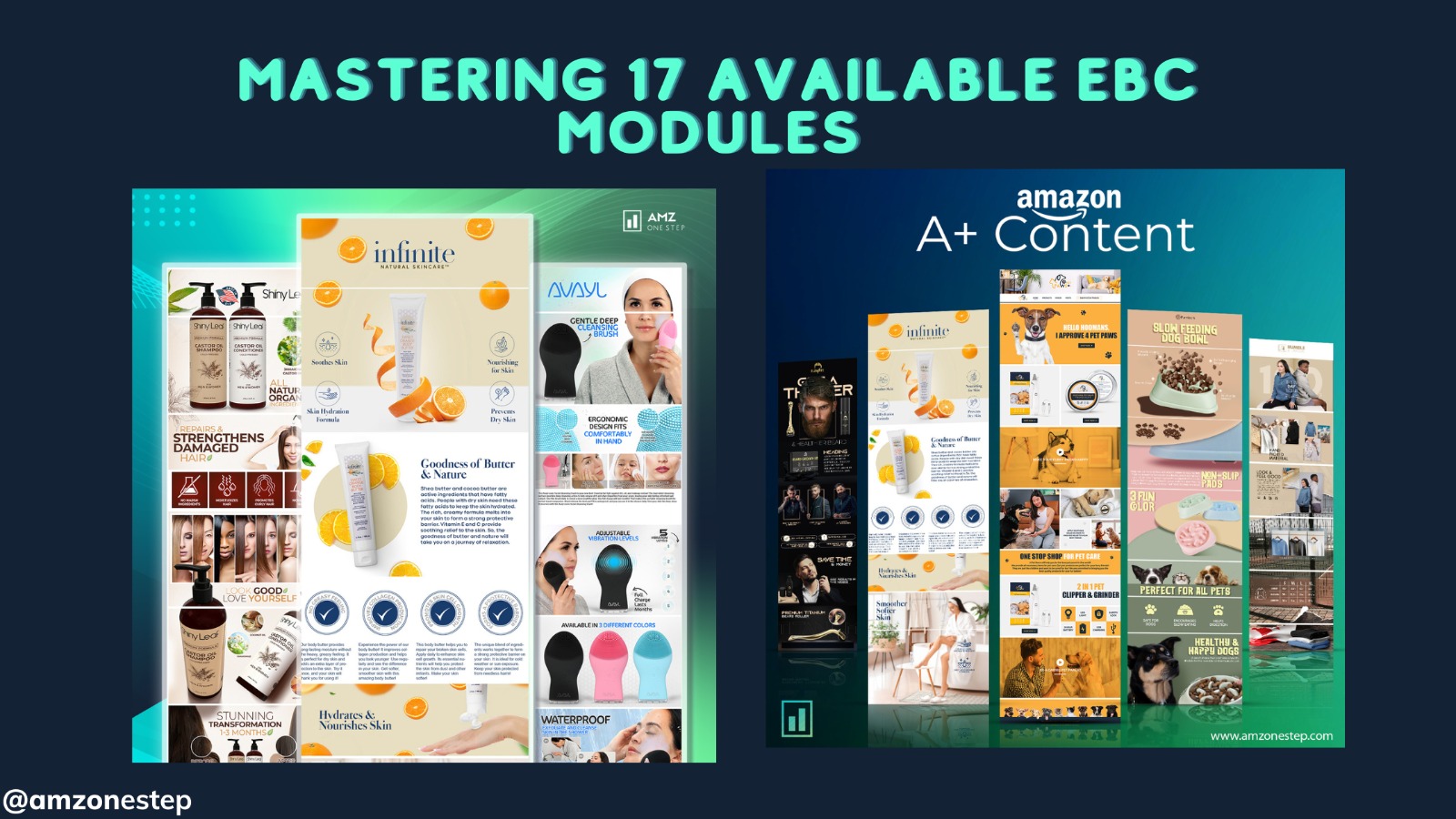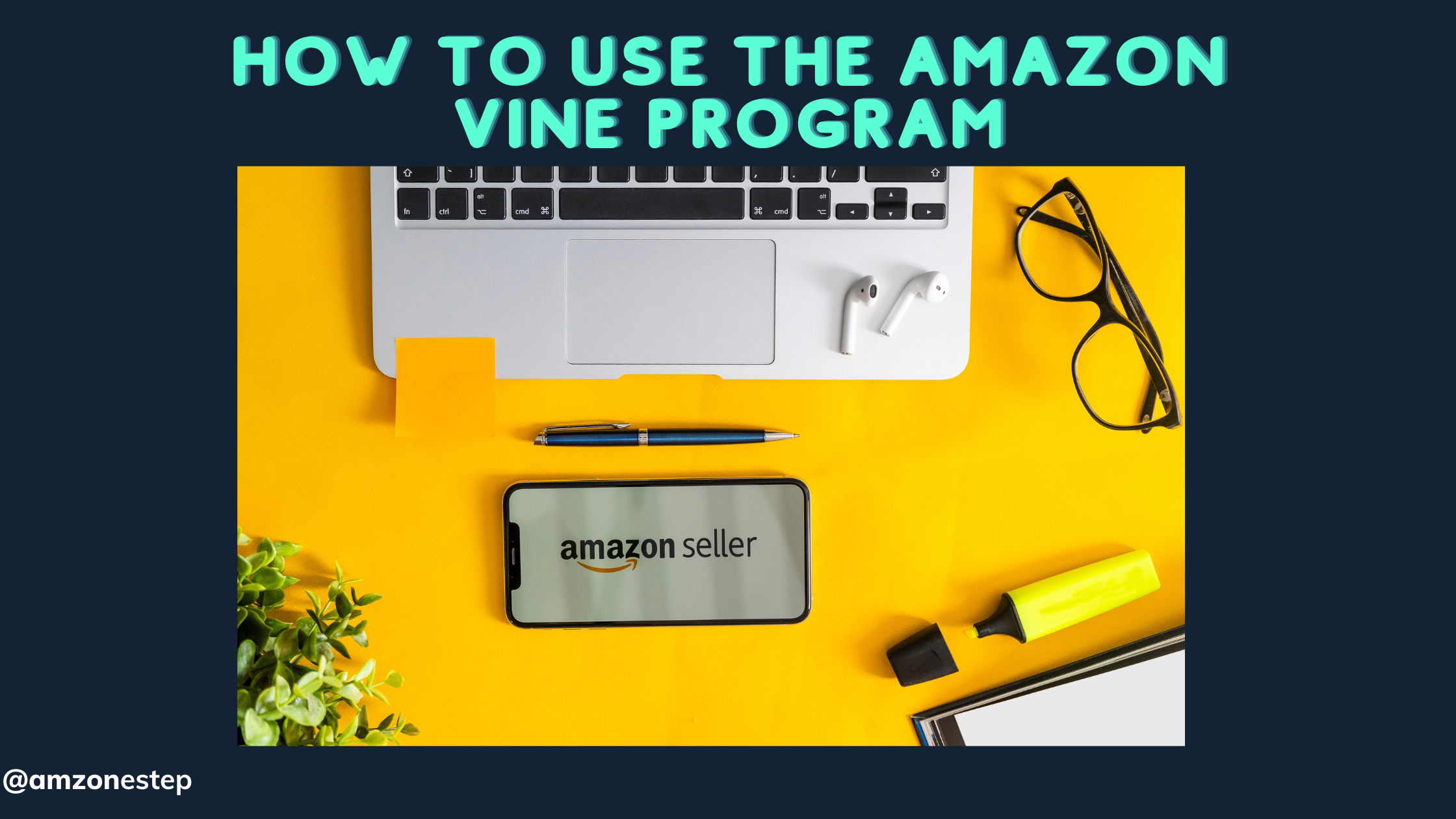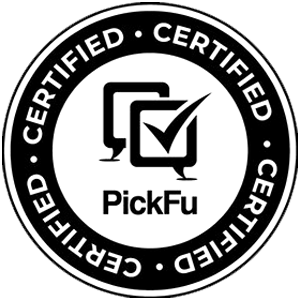Is your Amazon product image making the case it should be? In the tide of thousands of sellers, your visuals are the first—but probably not the last—first impression that a buyer gets from your product. They display your product and tell your story as a brand, address pain points for your customers, and encourage those shoppers to click “Add to Cart.”
From a simple lifestyle shot that offers inspiration, to a clean infographic that educates your audience on how your products or services can help them, your listing images need to directly address the needs of your audience.
Get ready, because here we are about to reveal the ways to make outstanding photos to drive conversions.
Explore More: How Can You Optimize Amazon Product Images for Related Items and Sponsored Placements?
Table of Contents
The Unique Impact of Images on Amazon Conversion Rates
Your product images are more than pictures—they are your silent salesmen ready to speak directly to your customers when you are selling on Amazon. Listing images can help you achieve all your conversion goals, build customer trust, and make your brand stand out from the competition on Amazon.
Below are eight creative and actionable ways images can affect Amazon conversion rates, along with new tips and examples for sellers.
Scroll-Stopping First Impressions
Your number one image is the first and possibly the only opportunity for your product to capture attention on Amazon and most other e-commerce sites. A good, bright, and cleaner shot can set you apart from others in the listing.
To this end, identify a main image that stands out from other listings, follows the Amazon guidelines, and showcases what makes the product special.
- For instance, if a seller is selling a stainless steel water bottle, the main image may contain the water bottle, but will also contain colors and reflections to demonstrate its high quality. When the product catches the viewer’s eye on a pure white background with full clarity, it can be identified from a distance, which makes you stop scrolling.
Weighty Tip for Sellers: Experiment with angles for your primary image to see which engages the most viewership. Choose an A/B testing tool (like Splitly) and test it out to see what does better
Detailed Product Images Starts Building Trust
As shoppers don’t get to see and touch their products, clear and high-quality images are necessary to create trust. Show multiple listing images with all sides, details, and close-ups of textures and materials. This insight reduces friction and gives buyers confidence that they know what they’re getting.
- For instance, if you sell leather wallets, show images of stitching quality, even leather quality (with some close-ups), internal compartment- images, etc. Detail of the embossed logo or brand can also point out the quality or authenticity.
A Fresh Concept for Sellers: Macro photography for extreme close-ups of luxurious materials or fine details. Emphasize the uniqueness of your product, such as special design, craftsmanship, or endurance.
An Emotional Bond Connecting Lifestyle Pictures
Lifestyle shots enable customers to envisage how your product integrates into their lives. You can create an emotional response in your audience by showing users using your product in real life situations. You enkindle desirability.
- If you are selling a yoga mat, show someone doing yoga at a beautiful outdoor area that evokes relaxation and health. Show features such as grip or thickness in action so that the customer can easily visualize how they will experience it too.
Ideas for Sellers: Partner with micro influencers or photographers for lifestyle shots with varying demographics and environments. Just make sure those images resonate with the dreams of your audience.
Provide Informative Infographics To Answer Questions
Infographics are a very effective visual method of communicating important information. Employ these to truly showcase scale, functionality, or any additional aspects that aren’t as clear in standard images.
- For instance, the seller of noise-cancelling headphones can insert an infographic with specifications for battery life, noise cancellation, and device compatibility. Buyers also find it easier to digest technical information when it is paired with clear visuals.
Have another idea for product comparison — Infographics — Without mentioning any competitor’s name. Employ appealing icons, graphs, and bulleted lists.
Sequential Images Storytelling
Step by step illustration or cartoon-style photo also helps buyers take a travel plan, visually illustrating the process of using guides or the process of change. It works particularly well on products that are targeted to solve a particular problem or need to be assembled.
- Illustrate the actual process if you are selling a kitchen gadget (say, a vegetable spiralizer) — step-by-step images of how to set it up, how to spiralize some vegetables, and how the final plate looks like, for example. Visual storytelling that shows how to use a product and/or final results.
Fresh Concept for Sellers— Complementing sequential pictures with lifestyle graphics showing the way the product fits into daily routines to improve familiarity and utility.
Standing Out With Unique Angle Shots
While many sellers are content with standard front-facing images there are plenty of angles that differentiates you from the products of other sellers. Show details that make your product unique, show perspectives that competitors might miss.
For instance, a seller of ergonomic office chairs should take under-seat angles where the adjustment levers are, or close-ups of the lumbar support system. These angles focus on functional fashion and comfort.
Tip for Sellers: Try incorporating 360-degree shots (or videos, where shoppers can “move around” the product) into your mix. Such an experience can increase conversions immensely.
Fostering Confidence With Authentic Use
Using real photos of people who use your product establishes credibility and boosts buyer confidence in your brand. Commonplace scenarios rather than overzealous models
- For kitchen knives, you might feature a chef or a home cook preparing a meal in situ. Steer clear of pictures that look forced; your camera can smell the shine from across the room.
Sellers’ fresh approach: Add customer-generated material that has got your authorization showing what they went through! These listing images serve as both social proof, and help make your listings come off as more authentic.
Highlighting Value Through Before-and-After Comparisons
Use before-and-afters to showcase your product. They are the first to communicate the value of your product.
- E.g. A cleaning products seller may show a dirty surface prior to use and show the area nice n shiny post cleaning. This becomes a visual story of change
Make sure that these listing images are accurate and according to Amazon guidelines to not mislead the purchasers.
Can Your Images Answer Buyer Questions?
Amazon images can do much more than showcase your product—they can address buyer concerns, clarify features, and answer questions before they’re even asked.
By using strategic visuals, you can reduce uncertainty, build trust, and boost conversions. Here’s how you can create images that act as a silent customer service tool.
Showcase Dimensions Clearly
The biggest question buyers ask most of the time is the size of a product, when buying online. Although text descriptions include detail, listing images can bring dimensions to life in a way that is closer and easier to comprehend.
Buyers never know how big or small a product actually is in real life, and they get confused about sizes a lot. Comparative images are a great solution to this problem.
- As an example, if you are selling a storage container, you might place it next to household items like a coffee mug, soda can, and/or a ruler. Which provides a context to help potential buyers quickly see how small or large the product actually is.
- For instance, the dimensions of the container in the image should be displayed (length, width, and height) to avoid misleading customers.
Highlight Key Features
Although bullet points and product descriptions are necessary for letting customers know about specific features of a product, listing images is a much quicker way to get these features across. Without any visual context, buyers would struggle to define expectations out of a wishlist.
On the other hand, images that draw attention to these features make your listing more visually appealing and easier to understand, so your customers will find the most important information about your product right away.
Instead of providing a list of features in text, think about having images that highlight each feature on its own: e.g. if you are selling a backpack, show an image that highlights the anti-theft pocket, another image for a water bottle holder, etc.
- For example, you can make a close up image to focus on the waterproof zippers or have a picture of padded straps while in use which provides comfort and durability, The same can be represented in the bag shot, like an image showing the various compartments with text call-outs pointing to the compartment available in the bag can explain the organizational structure of the bag perfectly.
This lets customers see the value of the product right away, without having to wade through product specs.
Demonstrate Usage Scenarios
A large portion of the ecom experience relies on the assumption of how a product will fit into a shopper’s daily life. This leads to a common doubt in the buyers about how the product will perform in the real world and if it all solves their need.
Lifestyle images are the best way to alleviate those concerns and display how your product works perfectly in different situations. This will help buyers to visualize how the item can be used, making it more attractive.
- So if you have a foldable water bottle, include how to fold it for a small bag, how to take it out on a hike, and how to wash or rinse it under a tap. Such listing images contribute to buyers picturing the usability and practicality of the product.
Do not just do the dreaded white-background in the middle of the screen shot of the water half-filled with unbranded water, but show it in action (it is where the convenience, portability, and functionality lives).
Lifestyle images lead buyers to visualize the product in action, and they are giving you an opportunity to help them feel an emotional connection with the item by imagining how well it could work for them, and what benefits they can derive from it.
These images more or less respond to questions such as: “Will it fit in my bag?” OR — “Is it travel-sized?” They also convey that your product makes sense and works for a variety of occasions, therefore raising its value.
Answer Reliability Questions
buyer’s want to know how durable and long-lasting a product is going to be, especially with products that are going to experience a lot of wear and tear. Don´t just wait for potential customers to ask if your product is durable or not, tackle it without asking through images.
Providing evidence of product reliability can go a long way, and this can easily be achieved by showing the product in operation or even being tested under realistic conditions.
- So say you are selling a phone case, show non-stop pictures of you dropping it from a height of 5 feet onto a hard surface and it still not breaking = shockproof. Reverse waterproof splash scene — this would be a very strong visual to demonstrate the waterproof aspect of the case.
You are offering actual pictures of the item withstanding such conditions, which means you assure clients that this is durable.
This is a simple idea that works to ensure that customers become very clear about the value of the product and also the reliability of the product due to higher trust levels and increased likelihood to purchase.
Show “What’s Included”
Too often, buyers are frustrated because they don’t know exactly what they are paying for. If customers are not sure if all the required components are included in the package, they are bound to have doubts, resulting in cart abandonment.
How to avoid this: Include images with everything that is included in the product. This removes ambiguity and manages customer expectations correctly.
- If you are providing a kitchen product like a blender, you should show an image with all the parts arranged in an organized manner: base, attachments, an instruction manual, and power wire. Shorthand what is included in the list under each item with text.
That is especially vital for products that are offered with several components or accessories that, the customer may think, are offered additional to that portion.
Clarify Assembly Requirements
As a result, consumers worry about how hard the product is to assemble when buying assembly-required products.
However, if your product requires assembly, addressing these potential concerns upfront through listing images can be impactful. Step by steps ensure customers can do it, if they have doubts about complexity or need special tools.
- So, if you are selling a flat-pack piece of furniture, then perhaps diagram each step of the assembly process. Images of necessary tools Together with each component Is the subject of the product By step If the assembly process is simple, this will take away any doubt regarding complexity, and will also make it seen as a product that is easy to set up.
Illustrate Safety Features
For several buyers, security is one of the most essential issues especially when this is in regard to a product meant for a child, pet or yourself.
When buyers can see its safety features they are likely to trust that product as well ultimately making a huge impact in their buying decision. Use visuals to show your product safely.
- If you are selling a baby car seat, make sure to display pictures that emphasize on the safety features that the car seat offers: safety locks, side protection, correct installation in a car, etc. Showing a slight variation if a kid is buckled safely in the seat can also add the perception of safety.
Address Maintenance Concerns
Most of the buyers fear about the maintenance of a product Read more! But on the other hand cleaning or maintenance of the product is easy to handle. Even if the offering is something that potential buyers may wish to get but if the product maintenance is tricky, people may hold back from making the purchase.
Combat this through pictures showcasing the ease of cleaning or maintenance. A simple visual signal can remove any uncertainty and encourage more conversions.
- If you’re selling a non-stick frying pan, you can have images depicting how its surface would come off easily after use, or easygoing videos of it being placed in a dishwasher without fear. Images of this nature will also show the product necessities in the way of maintenance, which is a real selling point for a lot of customers.
Common Image Mistakes That Turn Buyers Away
Poor Image Quality
The most common mistake sellers make is uploading poor-quality images. Photos that are blurry, pixelated, or poorly lit not only make it all but impossible for buyers to see details about a product, but also imply a lack of professionalism in the product or the seller.
Stock or low-quality images can cast unnecessary doubts regarding the genuineness and quality of the product among potential buyers. An unclear or fuzzy image might imply that the seller is hiding defects, or is not interested in putting his product in its best possible form, which might lead to reluctance and cart abandonment.
When it comes to listing images, high-resolution, crystal-clear and brightly lit photos portray professionalism as well as transparency. This allows customers to get up close and personal with the product, its texture, its material, and anything unique about it.
Especially for products such as jewelry, clothing, or electronics where every detail may make a difference, high-quality images are crucial.
High quality photography can change the way people look at your stuff so invest in some or use tools, to make images more appealing and help you build a better image of your brand and product.
Inadequate Lighting
The secret sauce in product photography success is lighting. Bad lighting hides important details and makes it hard for a buyer to see the product. Insufficient lighting that is either too dim or too bright can leave shadows over the item or exaggerate coloration, making the item look very different than it actually does.
This can annoy prospective clients that wonder why what you are selling simply cannot be unique, or unique enough.
- Such hasty spirit is a sure shot to a blunder as fair but smooth lighting should be used to project the true colors of the product. Natural light works well for some products as it gives a neutral and flattering tone.
Or, more simply, shaped light, such as a softbox or light tent, controls the harshness of shadows while gently revealing the details of the product without blowing the highlights. Using the right lighting can foster trust and guarantee that the product is not misrepresented, making a conversion more likely.
Overly Cluttered Backgrounds
One of the most common mistakes in product photography staging is using backgrounds that are too busy and cluttered. Too busy of a background takes the eyes of the buyer away from the product – and can make it look less professional.
- If a background is very busy or is distracting in nature, a buyer might struggle to separate the product from the background and may not get a clear picture of the elements of the product. This person would think the item is less valuable and could become confused or displeased.
One of the simplest ways to make a product stand out is with a blank background. A neutral or solid background is ideal so the attention remains on the product being sold. Occasionally, lifestyle photos where the product is being used are acceptable, but the product still needs to be the focal point of the image.
By having a clean, well-staged background, the seller not only points focus towards the product and all of its features, but also indicates that they have taken the time to present the product as a professional seller should.
Lack of Multiple Angles
Another common error is to upload only one image of the product. A single shot does not allow the buyer to get a full idea of the design, functionality, or quality of the product.
- For example, customers tend to look at a single product from several angles, such as shape, texture, and how it is likely to fit itself into the customer’s lives. When you offer just a single image, it may cause doubt to the buyers because they feel like they miss half of what is in the photo.
To avoid this error, use multiple images at different angles for a good view of the product. If you are trying to sell a piece of furniture, include photos of the front, sides, back, and close-ups of important features.
Demonstrate product if relevant, e.g. a person wearing a jacket or a lamp switched on. This diversity offers buyers a complete insight into the product and might have a positive effect on their purchase intention.
False Or Deceptive Advertising
Inaccurate images, for instance showing photos that are not truly related to the actual product, may prompt potential buyers to turn away.
These can be images with too many features, listing images that are overly posed, or images with filters that enhance the colors and texture of the product to the point that the product does not actually look like this.
Buyers are more likely to return products, leave bad reviews and refrain from buying from the seller again when a product does not reflect its image.
The best way to avoid this error is to make sure the images that are used to represent a product, accurately reflect the item that is being sold. It should encompass the colors, proportions, and features of the product without any distortions.
In case the product has variations (like colors options or sizes) use individual images so that it does not lead to confusion. Good images with transparency and authenticity establish credibility and trust, which in turn, leads to increase in sales and repeat customers.
Ignoring Product Scale
When images are not well conceptualized in terms of scale, sellers often lack the ability to effectively represent product sizes to the buyer. Buyers may have no sense of scale, and without additional photography, they may think the item is smaller (or larger) than it is.
- A photo of something small, like a keychain or pen, may appear larger than anticipated if set within a vacuum with no other objects to reference its size. That might end in disillusionment when the product comes in, which is able to lead to returns.
- You can also try adding reference objects in the photo that buyers can relate to, such as a hand holding the object, or place the product next to everyday objects, for example, place a coffee cup, ruler, or a coin.
These references give customers a better sense of scale to the product, thus allowing them to decide if this product is for them or not. Offering precise size references can help to enhance customer experience and limit returns.
Not Demonstrating Product Usage or Purpose
This is part of understanding your customer base — buyers want to know how the product looks and how it functions. One of the biggest mistakes is not showing the product in action & then potential customers would be unsure if it actually works and whether they actually need it or not.
- As an example, when selling a blender, the static, unassembled product image will not communicate the way it works or how easy it is to use.
How Image Layouts Influence Buyer Decisions
Having an organized image layout will direct the buyer view in a particular sequence to help them view the most important features of the product at the very beginning. Putting the primary product image at the top or in the center of the layout attracts immediate attention.
Secondary images directly follow with logical sequencing, highlighting close-ups, lifestyle shots or alternate angles.
Not only does this clear hierarchy allow customers to process information quickly, but it also guarantees that they can navigate through the listing images easily to get a complete picture of what the product actually is.
The easier you make it for buyers to view an item from different angles or in different contexts, the more likely they are to be sure about what they’re purchasing.
Improving User Experience (UX)
Having a familiar and predictable structure enhances the user experience. If buyers can access relevant information like product size, color options, or essential features, they are more likely to get a pleasant experience on their shopping journey.
The perfect layout of images helps in reducing friction – as the time taken to comprehend the product becomes less.
- If you are selling a piece of clothing, for example, you should be able to see an image of the item from the front, back, sides and close up of details of the item such as stitching or fabric so the customer can inspect the product without having to find his/her own pictures.
Some layouts may offer zoom-in features, where users can click to have a closer look at some product information; this is another way to improve the experience by offering the buyer to be in charge of how much they want to see.
Having a simple, structured, and easy to navigate image layout makes it easier for potential customers to buy something from you and accordingly lower the bounce rates.
Enabling Product Comparisons
Also, vibrant and intelligent product comparisons are made by prospective buyers in the shopping cart stage of e-commerce. A good image layout makes it easy for them to compare your product to others by simply visualising its unique features and differentiators.
- As an example, if you are marketing a gadget that serves multiple functions, you can show images of the different modes or functions the product offers, highlighting the versatility of the product.
Using strategic placement of listing images to highlight these key differentiators will aid customers as they imagine why they should choose your product over another one.
This kind of image display may also play well with comparative charts demonstrating various iterations of a single product (e.g., color comparison, size comparison) alongside each other. This alleviates uncertainty, which is an essential part of the process when closing a sale.
When a buyer can easily compare features and see why your solution is better, the chances they take the next step of shopping are higher.
Trustworthy Design Through Repeated Web Layouts
Trust plays a vital role in any buying decision, especially when you buy something online, you are not able to physically test a product. An organized image layout can always help in gaining trust as this reflects our efforts and reliability.
If the set of images seem unpolished and appear to be taken by random customers, it creates a doubt in the customer mind if the vendor actually cares about the presentation of their products.
This is especially useful if you carry high-ticket items or products that buyers may be skeptical about their quality or authenticity.
Cohesive image sizes and orientation, along with the usable formats reinforces the identity of a seller as organized and detail-oriented, instilling trust in the customer.
Improve Product Feature Focus
This sends us to a main element related to image layout: the capacity to highlight the highlights of the item, but without flooding the buyer with each of the data fragmented in a shot. Inserting a layout of call-out text, arrows, or labels into the image can highlight key features.
- So, for instance, if you are selling a high-end kitchen appliance, you can have an image with labeled arrows indicating specific features, say buttons, digital screens, or special attachments.
This way, you create a more informative experience by directing the customer’s eye towards the product features that matter most. This is especially effective in case of complex products having many features.
A well-structured demo: When the buyer can visualize how each feature would work then they can realize the uniqueness of the product and can feel confident about buying the product.
Show Scale and Size of a Product
One of the flaws that people often stumble upon while purchasing online is not being able to estimate the size of a product or the scale of an item. This can be eased by providing relatable references within the image layout.
- For instance a product alongside a known object such as a coffee mug, phone, or person can be helpful as it allows buyers to gauge the actual size of the product.
But for a product that is meant to sit on a shelf or be worn, customers will scale relative to their other dimensions, and without these references, customers will either scale even larger or smaller than you intend, and there is potential for disappointment.
This can also be solved by putting measurements in the actual photos. Showing an image of the shelf with labelled dimensions can provide buyers with all the specifications they need to ensure the product will fit into their space.
Helps provide clarity on size and proportions through the layout of the image and decreases uncertainty for buyers and subsequently reason for potential returns.
Make Interacting With The Product Attractive
An image layout that promotes engagement will lead to increased engagement and, eventually, an increased probability of conversion. With features like 360-degree views, zoom-in view, and an option to view the product from different angles, customers can virtually interact with the product.
- Such a layer of interaction is crucial for high-end or complex products, for example, electronics or luxury products, which buyers usually want to view in detail before purchase.
- Interactive image layouts on your product page offer a more immersive experience and give customers the experience of holding the product in their hands.
Touch-that at least this hands-on approach even in the online world can do wonders when it comes to prompt the final buying action-as it brings out an in-store shopping experience.
What Do Buyers Look for in Amazon Images?
Original and Straightforward Product Advertising
Consumers prefer listing images that depict an item in its true form since the photos they receive are actually as depicted. While saying ‘less is more’ is usually not entirely appropriate for most things in life, overly polished and edited photos might disappoint buyers or lead to a string of returns.
Real life images depict the facet of the product which has not been altered in any manner, including the color, texture and surface finish of the product.
- For instance, a leather handbag must have photos that zone in on material, which features textural, sewing, and underlying graininess. While these details do tell the quality of the product they also assist in creating confidence in consumers.
Further, authenticity also means presenting the product in a way it is, without putting a lot of makeup on it. For instance, if one is designing a ceramic dinner plate the image should not contain shinny filters if the dinner plate contains matte finishing.
Realistic Use in Everyday Settings
Purchasers need to understand how they would use a product. Great pictorial images that depict the product in contexts that are familiar encourage customers and emotional buying.
- For instance, a coffee maker placed on a clean kitchen top cup of coffee on the side gives a clue as to how the coffee can enhance one’s morning routine. It brings the functionality of the product closer to life and enables buyers to easily place the product in their lives.
Lifestyle settings are critical more so for products that are used every other day. Scenes in which a pair of sneakers can be photographed include a person strolling through a park or a person exercising on a treadmill.
- For kitchen appliances, it is perfectly suitable to demonstrate what meal the blender is making as a smoothie, or what meal a slow cooker is great for making.
They also speak about the possibilities to use the product, these settings are realistic. For instance, a multi-functional desk shown in a home office setting together with a computer, books and a cup of coffee gives an idea of how a workspace can adapt to work-from-home.
Likewise, from the comfort of their home, a sofa placed in a cozy living room setting will make buyers imagine how the piece of furniture will look like in their homes.
Culture and LifeStyle Preferences
- Pictures and other visuals in line with these views may carry a great impact on buying behavior. For example, presenting a set utilized during the holiday, including Thanksgiving or Diwali, captures the buyers ‘ attention and makes them visualize the product’s use. This makes the product more appealing and relatable to the target market due to cultural affinity it has towards the product.
Relevance to lifestyle is also considered important in well defined segments.
- For example, the workout wear worn on different-shaped models in different settings such as gym, a park or even a home fitness equipment section shows that the brand is inclusive. Most consumers desire their images reflected in products or product advertisements.
- For instance, an advertisement that depicts a yoga mat in use at a natural setting such as a garden and inside a cramped up apartment satisfies different types of needs, thus, the product cover’s a broader mosaic.
- Another important aspect of cultural relevance of the imagery is that it creates trust. For example, if the product is being marketed globally it could be useful to include pictures depicting people of different skin color, dressing style or even different cultural practices, preferences etc.
- For example, the sellers of cookware could put in their visuals examples of recipes from different cultures, appealing to the buyers’ culture.
Standard Zoomable for Inspection
Purchasing offline stores gives buyers an experience of touching and feeling of the products they are buying. A lack of visible textures and low detail density is counterbalanced by zoomable images that provide customers with detailed observations.
It is valuable for such types of products as jewelry, electronics, luxurious leather accessories, etc., especially if they are bought to be used at business meetings with partners or at other formal occasions.
- For instance, a buyer of a leather wallet will want to inspect the wallet’s stitches, grain and the embossed logo of the wallet. Image enlargability which allows the customers to examine the quality of the product from listing images that are in higher resolution.
Likewise, the use of detailed images for electronics, such as ports, buttons, and screen displays, enables the buyers to better appraise form and features of what they are purchasing.
Another advantage of zoomable images is that they are useful when describing products with some highly relevant technical attributes.
- For instance, a power tool can have detailed shots of attachments, grip, and protective measures in motion; such an aspect helps buyers make judgments on the tool’s use and construction. For clothing, specific views of fabric, stitches and other details let the buyer make a correct decision about style and wear resistance.
Images Addressing Concerns
Consumers sometimes have particular issues or questions in mind when choosing and considering buying a particular product. In fact, negating these concerns through listing images can rid it all together and foster trust.
- For instance, an adaptor for charging a phone could display animations of how the charger is appropriate for charging phones, tablets and laptops. This can be done with a picture of the charger connected to different kinds of devices with manufacturers’ brands and the devices’ models inscribed on a nearby label.
This is advantageous to the buyer because they are assured about their purchase by being told what they want to hear, that a certain product is compatible with another.
- Another example for kitchen products is a knife set. As for the actual artefacts, buyers question specifically the sharpness of the knives as well as their general sturdiness.
However, touching an image of the knives while they are in use by placing them in a setting such as cutting through a hard vegetable such as pumpkin or even flesh of an animal gives a visual guarantee of their performance.
Two requirements that may cause durability worries can also be addressed with here showing images that depict real testing conditions.
- For instance, a suitcase may be used while demonstrating that it has passed a certain drop test or while demonstrating that it is strong enough to bear a several hundred pounds weight. This puts the mind of the buyer who may have some doubts about the durability level of the product.
- In the case of electronic gadgets, figures that can explain safety features such as overheating protection of the hair straightener can remove safety concerns. Besides, it is useful to have an image where you can depict that people, children, adults, or professionals, can use the product.
Product Variations in Action
Some purchases are made in different color, size or format, and the buyer would wish to see these options clearly before arriving at a decision. Photographs that present the product with different options used in various applications give the buyer clarity that helps in picking the most suitable variation.
- For example, if a brand selling furniture wants to display a sofa they are selling, IMAGES should depict the same sofa in five different colors on a background depicting a living room setting. In doing so, the buyers can easily have a glimpse of how one variation could fleet with the rest of the interior theme.
It is also a good idea to single out the size or other differences, apart from the colors.
- For example, a travel backpack, the product can be placed on different people where the labels are superimposed on the images of small, medium, and large bags. This also allows buyers to choose the best size for their needs from a given size range available on the market.
Branding brands always stand out when it comes to showcasing product iterations. A dress can be made and sold in several patterns or materials, hence, the models which promote the dress sundress might be of different colour or size.
Besides marking the availability of various choices, it gains access to the broad circle of consumers, thus making people interested in the product.
Graphics True to Safety and Sustainability
Today’s consumer provides much emphasis on the safety of the products as well as the environmental effect of the products. Managers need to understand that specific listing images that call attention to various aspects of a product like safety and the firm’s sustainable practices have a strong impact on buyer perception.
- For example, a baby crib could also offer images of how it locks securely and other highlights i.e. side impact and safety certifications such as ASTM or JPMA. However, a picture of the crib along with the badge which shows that it confirms the safety standard of the country also provides the parents confidence about the product.
For products targeted at conscious consumers the imagery associated with sustainability strikes the correct chord.
- For example, a reusable water bottle can have pictures on it that point out such facts as the type of packaging used or the kind of material used in its manufacture. Additionally, one can add an infographic that demonstrates the advantages of using the bottle, comparing it to the single-use plastics to maximize the message about the product’s sustainability.
A product with labels like organic, biodegradable, or carbon-neutral should be able to clearly indicate these in the visuals used.
- For example, an organic cotton bedding set might include a picture of the bedding set itself on an actual bed in a relaxing bedroom, then place the icons of organic certification, and a short message of how it contributes to the environment on top of it.
Explore more with AMZ One Step

Hi there! I’m the content marketing and branding specialist for AMZ One Step. I work hard to create engaging and informative content that helps our readers learn more about Amazon selling and how to make the most of their businesses. I love spending time with my family and exploring literary works when I’m not writing or working on projects.

